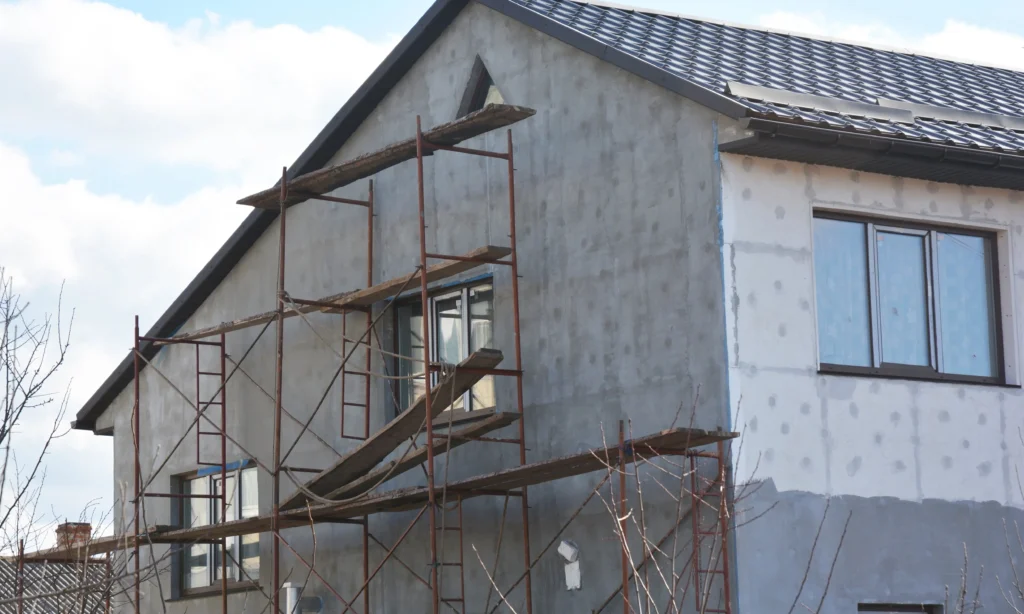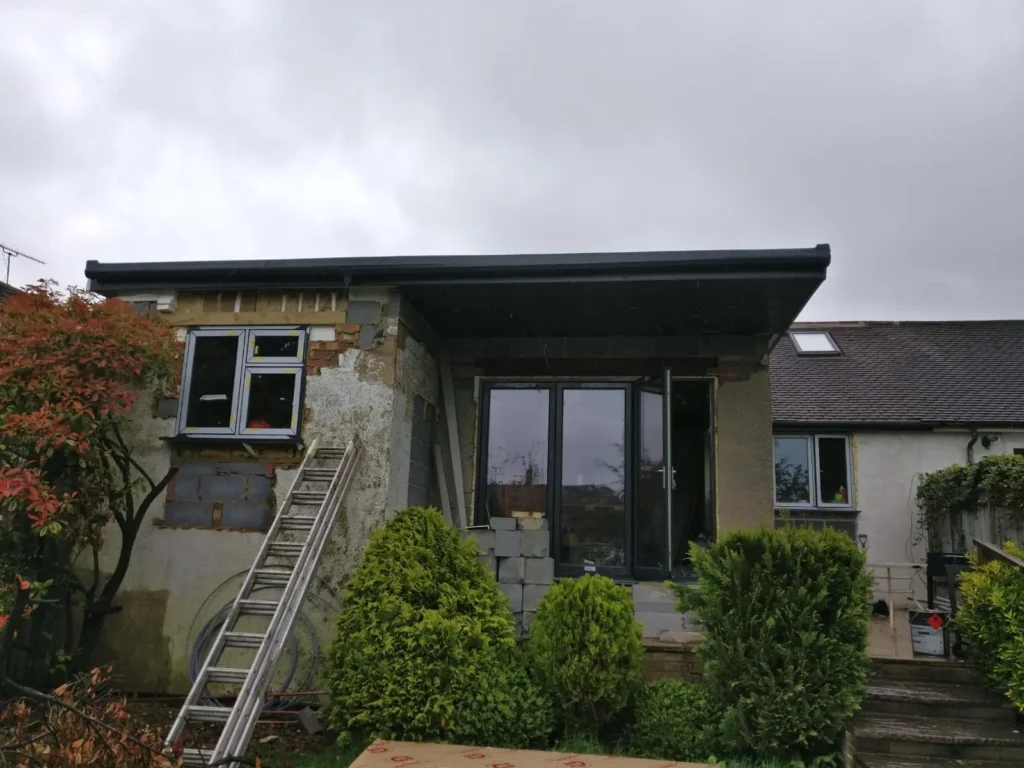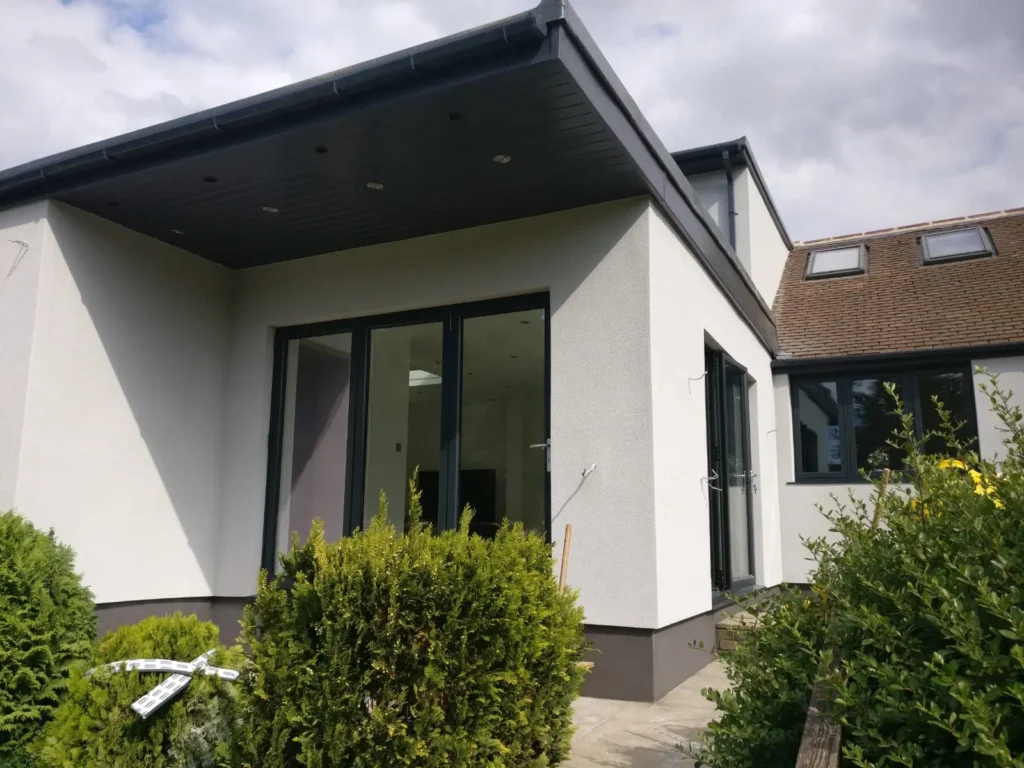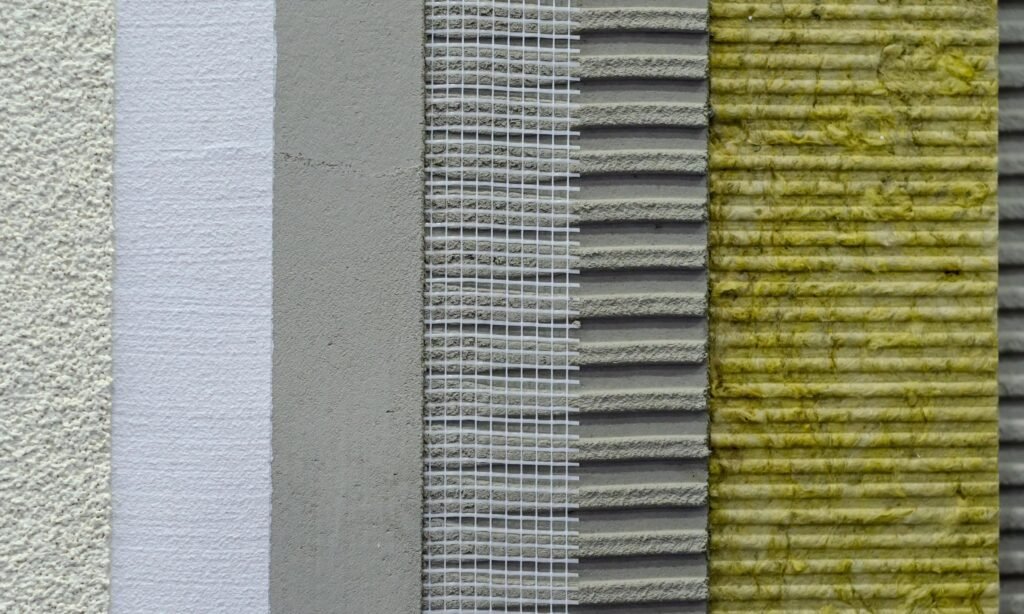External wall insulation has revolutionised how UK homeowners approach energy efficiency and home comfort. The visual transformation achieved through professional EWI installation is nothing short of remarkable, with properties experiencing improvements in both appearance and performance. This comprehensive guide showcases real EWI transformations, demonstrating why this investment continues to gain popularity across the United Kingdom.
The changes achieved through external wall insulation extend far beyond mere aesthetics. From reducing energy bills by up to 40% to eliminating cold spots and dampness, these transformations reveal benefits that impact every aspect of home living.
What is External Wall Insulation? Complete UK Guide
External Wall Insulation (EWI) involves applying insulation materials to the exterior walls of a property, creating a continuous thermal barrier that dramatically improves energy efficiency. This system typically consists of insulation boards, adhesive, mechanical fixings, reinforcement mesh, and a protective render finish.
For a comprehensive range of external wall insulation products and systems, professional installers rely on quality materials to achieve optimal results.
The process transforms both the thermal performance and appearance of UK homes. EPS (Expanded Polystyrene) insulation boards are the most popular choice for UK properties due to their excellent thermal properties, durability, and cost-effectiveness. When professionally installed with quality materials from suppliers like Penguin Building Materials, the results speak for themselves.
The installation process requires careful planning and expert execution to achieve transformational results showcased throughout UK properties. Professional installers follow strict guidelines to ensure optimal performance and longevity.

Before and After External Wall Insulation: Real UK Case Studies
Modern Home Extension: EPS Insulation Before and After Results
Before External Wall Insulation: This modern UK home extension was captured during the final stages of construction, showing the raw building structure before external wall insulation application. The unprotected walls were vulnerable to weather damage, thermal bridging, and poor energy efficiency. Without proper insulation, the property would suffer from heat loss and uncomfortable living conditions.
After Professional EWI Installation: The completed transformation showcases professional external wall insulation at its finest. The property now features pristine white render finish with dark grey detailing, creating a stunning contemporary appearance. The seamless EPS insulation system eliminated thermal bridging while providing superior weather protection and energy efficiency.
Traditional UK Bungalow: Before and After EWI Transformation
The Challenge Before Installation: This traditional UK bungalow was photographed during EWI preparation, with protective taping visible around windows and ongoing construction work. The property displayed typical challenges requiring external wall insulation: exposed brick construction, potential thermal bridging, and the need for comprehensive weather protection.
Outstanding Results After EWI: The completed installation demonstrates exceptional transformation through professional external wall insulation. The property now features smooth white render finish that completely transforms its appearance while providing superior thermal performance. The bay window area shows particular attention to detail in the EWI application.
Pre-Installation Issues: Common UK Home Problems
Heat Loss and Energy Bills Before EWI
UK homes without external wall insulation typically lose 30-35% of their heat through walls. This massive heat loss translates directly into elevated energy bills, with many properties experiencing monthly heating costs of £150-250 during winter months.
Before insulation, thermal imaging reveals heat streaming from wall surfaces, particularly around windows, doors, and structural elements. These heat loss patterns create uncomfortable living conditions and wasteful energy consumption.
Damp and Condensation Issues Pre-Insulation
Cold wall surfaces in uninsulated properties create ideal conditions for condensation formation. Before EWI installation, many UK homes experience:
- Surface condensation on internal walls
- Mould growth in corners and behind furniture
- Musty odours from persistent dampness
- Wallpaper peeling and paint deterioration
- Health concerns from poor indoor air quality
Poor Thermal Comfort Before External Insulation
Uninsulated external walls create significant comfort issues throughout UK properties. Before EWI installation, occupants frequently experience:
- Cold wall surfaces radiating chilliness
- Draughts and air infiltration
- Uneven room temperatures
- Difficulty maintaining consistent heating
- Condensation on windows and walls
Post-Installation Benefits: EWI Advantages

Energy Savings After EWI Installation
The energy savings achieved after professional EWI installation are consistently impressive across UK properties. Typical results include:
- 30-40% reduction in heating costs
- Improved EPC ratings by 2-3 bands
- Enhanced thermal comfort year-round
- Reduced carbon footprint significantly
- Increased property value by 8-12%
After installation, properties maintain stable internal temperatures with minimal heating input. The continuous insulation barrier eliminates thermal bridging, ensuring even heat distribution throughout the building.
Improved Home Comfort After EWI
Post-installation comfort improvements extend throughout the property. After EWI installation, residents consistently report:
- Elimination of cold spots and draughts
- Stable room temperatures regardless of external weather
- Reduced noise transmission from outside
- Better air quality without condensation issues
- Enhanced summer comfort through improved thermal mass
Enhanced Property Value Post-Insulation
External wall insulation delivers significant property value enhancement beyond energy savings. After professional installation, properties typically achieve:
- Improved kerb appeal through fresh render finishes
- Higher market valuations due to energy efficiency
- Faster sale times in competitive markets
- Reduced ongoing maintenance requirements
- Enhanced building durability and weather protection

EPS External Wall Insulation: Before and After Performance
Lakma EPS System: Installation Process and Results
Lakma EPS systems deliver exceptional before and after performance improvements across UK installations. These high-quality EPS boards provide superior thermal insulation while maintaining excellent durability and weather resistance.
The Lakma system installation process ensures optimal adhesion and mechanical fixing, creating a robust insulation barrier that performs consistently for decades. Before and after thermal testing demonstrates the system’s ability to eliminate thermal bridging while maintaining breathability.
Professional installers rely on Lakma’s technical support and quality assurance to achieve outstanding transformational results. The comprehensive system approach includes compatible adhesives, renders, and finishing materials for complete performance integration.
Tytan Adhesives: Before and After Application Benefits
Quality adhesive systems prove crucial for long-term EWI performance. Tytan adhesives provide the reliable bonding necessary for successful external wall insulation installations across diverse UK building types.
Before application, surface preparation ensures optimal adhesive performance. After proper installation using Tytan products, the insulation system achieves maximum durability and weather resistance. The superior bonding strength prevents delamination and ensures consistent thermal performance throughout the system’s lifespan.
Professional installers choose from a comprehensive range of adhesive and foam adhesive products to ensure optimal bonding for every project. High-performance options like Universal Adhesive Mortar Syntekol PSW and IS21 Adhesive Reinforcement Mortar deliver exceptional before and after results across diverse UK building types.
External Wall Insulation Cost: Before and After ROI Analysis
Installation Costs vs Long-term Savings
External wall insulation represents a significant upfront investment, typically ranging from £8,000-15,000 for average UK semi-detached properties. However, the before and after financial analysis reveals impressive return on investment through reduced energy costs.
Most installations achieve payback within 8-12 years through energy savings alone. After factoring in property value enhancement and improved comfort, the overall return on investment becomes even more compelling.
The long-term perspective demonstrates clear financial benefits. After external wall insulation installation, annual energy savings of £600-1,200 compound over the system’s 25+ year lifespan, delivering substantial financial returns.
Government Grants and Funding Options UK
Various UK government schemes support external wall insulation installations, particularly for eligible households. Before proceeding with installation, homeowners should investigate available funding options including:
- ECO4 scheme for qualifying properties
- Local authority grant programmes
- Green finance options with competitive rates
- Energy company obligation funding
- Regional specific support schemes
After securing appropriate funding, the effective installation cost reduces significantly, improving the overall return on investment timeline.
Choose External Wall Insulation: Expert Checklist
Before committing to EWI installation, careful consideration of several factors ensures optimal results:
Property Assessment Requirements:
- Structural survey to confirm wall suitability
- Planning permission requirements verification
- Neighbour consultation for semi-detached/terraced properties
- Access requirements and scaffolding considerations
System Selection Criteria:
- Insulation material choice (EPS, mineral wool, PIR)
- Render finish options and colours
- Mechanical fixing requirements
- Breathability and vapour permeability needs
Contractor Selection Process:
- Certification and insurance verification
- Previous work portfolio review
- Technical competency assessment
- Warranty and aftercare provision
For professional guidance throughout the selection process, consider consulting specialists like those at Penguin Building Materials who provide comprehensive technical support.

Post-Installation Maintenance: Care Guide
Proper maintenance ensures EWI systems continue delivering optimal performance years after installation. Regular inspection and minor maintenance preserve both appearance and thermal efficiency.
Annual Maintenance Tasks:
- Visual inspection for render cracks or damage
- Cleaning of render surfaces using appropriate methods
- Gutter and downpipe clearance to prevent water damage
- Window and door seal inspection around insulation
Long-term Care Considerations:
- Professional render cleaning every 3-5 years
- Minor crack repair using compatible materials
- Repainting or re-rendering after 15-20 years
- Mechanical fixing inspection if visible
Quality installation using products like IS-165 fibreglass mesh ensures long-term system integrity with minimal maintenance requirements.
Before and After External Wall Insulation: FAQs
How long does external wall insulation installation take? Typical installations require 2-4 weeks depending on property size and complexity. Weather conditions can affect timelines, particularly for render application and curing.
Will external wall insulation affect my property’s appearance? Modern EWI systems offer numerous render finishes and colours, often improving property appearance significantly. Before and after photos consistently demonstrate enhanced kerb appeal.
Do I need planning permission for external wall insulation? Most EWI installations fall under permitted development rights, but certain properties may require planning permission. Conservation areas and listed buildings typically need consent.
How long does external wall insulation last? Quality EWI systems last 25-30 years with minimal maintenance. Proper installation using proven materials ensures optimal longevity and performance.
Can external wall insulation be installed on any property type? Most UK property types suit EWI installation, though assessment ensures suitability. Structural integrity and existing wall construction influence system selection.
What’s the difference between internal and external wall insulation? External insulation provides superior thermal performance, eliminates thermal bridging, and preserves internal floor area. The before and after benefits consistently favour external installation.
Transform Your Property Today
Related Articles Explore more of our expert guides to external wall insulation:
- External Wall Insulation Cost in the UK
- Before and After External Wall Insulation
- External Wall Insulation Fixings: Complete Guide
- How to Select the Right Adhesive for Different External Wall Insulation Materials
- Choosing the Right Render for External Wall Insulation: A Complete Guide
- External Wall Insulation: Professional Plastering Guide
Visit our Blog for more valuable insights and expert advice on external wall insulation and other building materials.
This article was prepared by industry experts with extensive experience in external wall insulation systems and materials. The information provided is based on current best practices and manufacturer recommendations as of May 2025.
